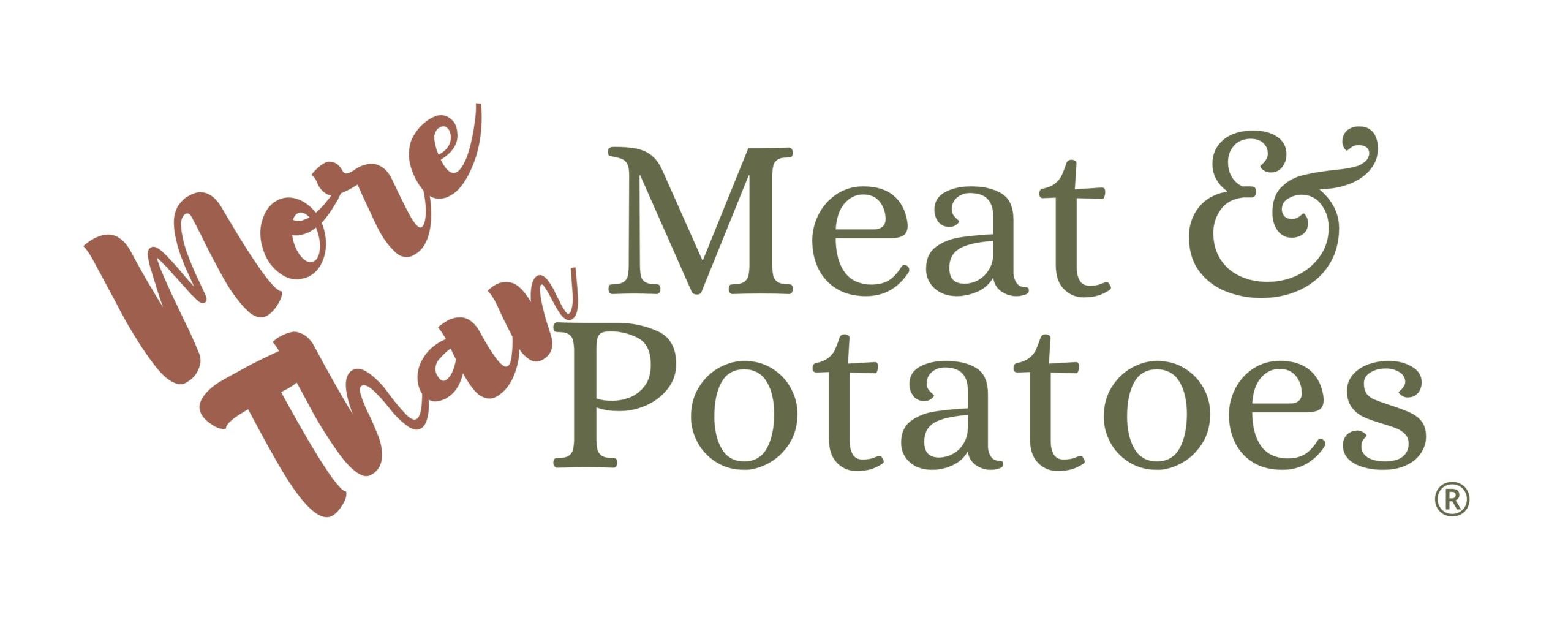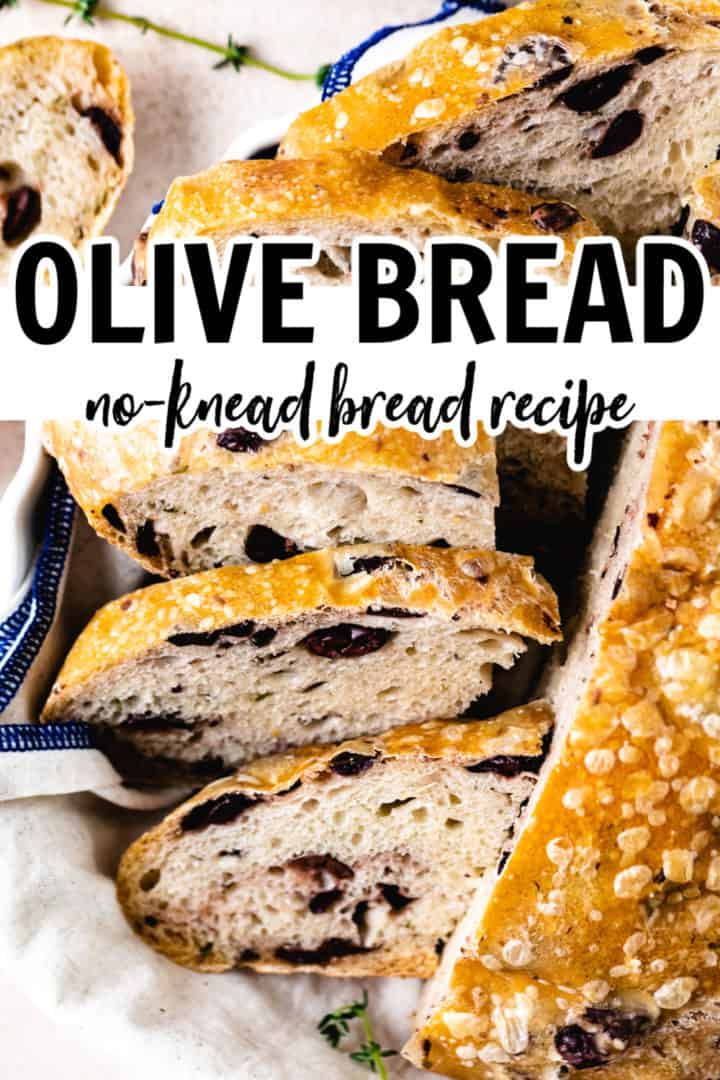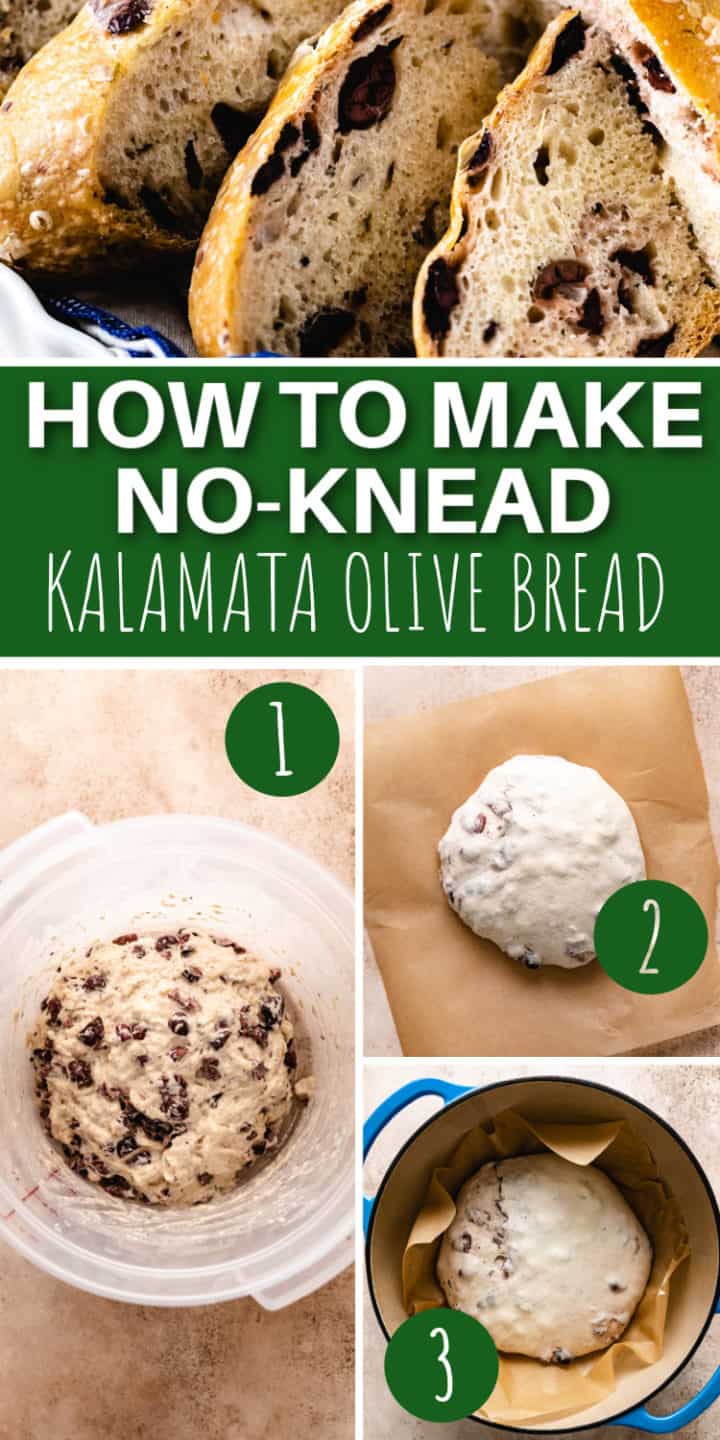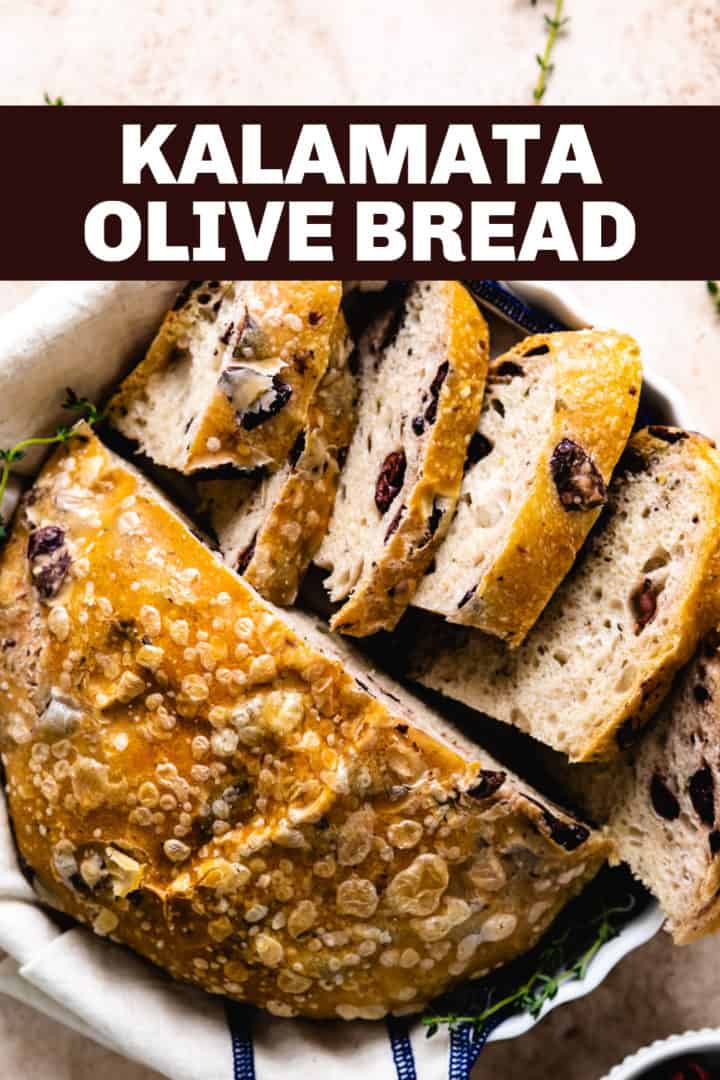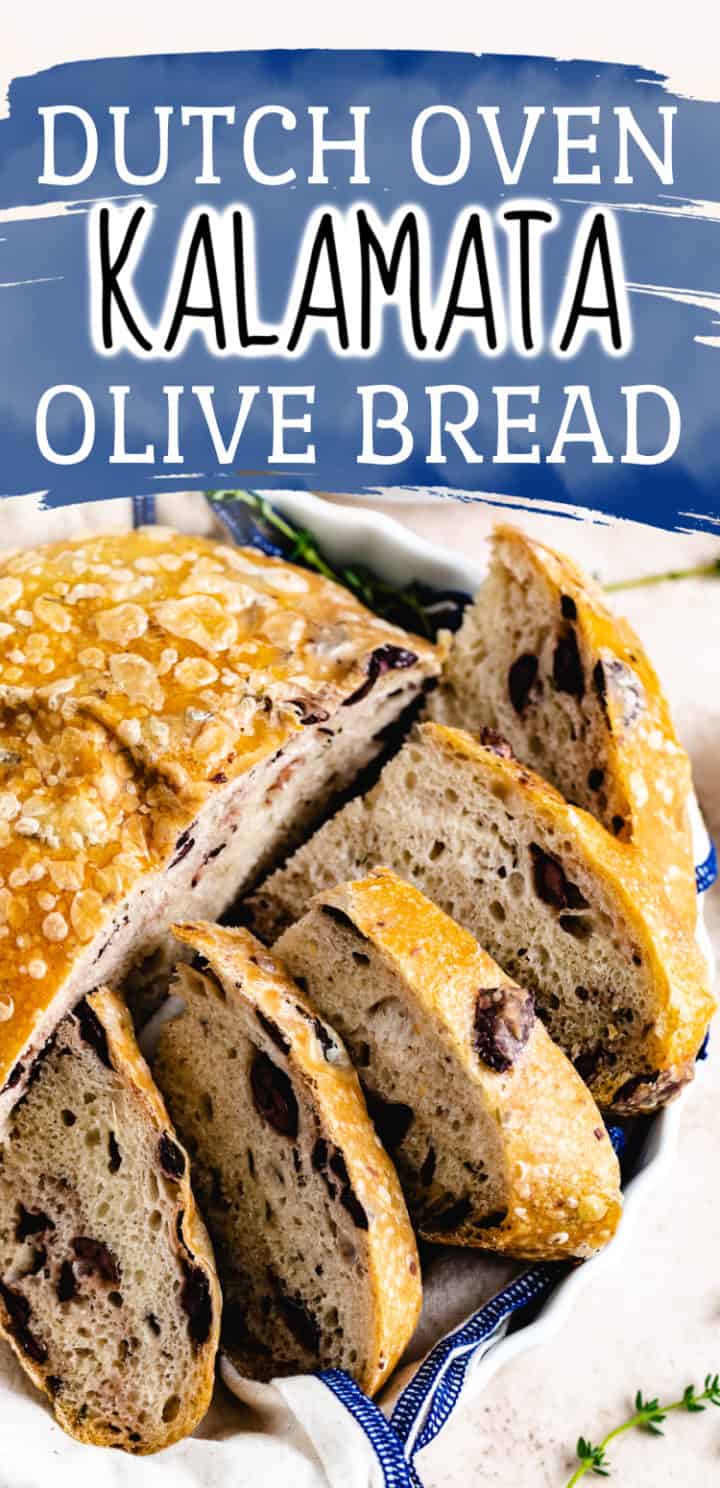Olive Bread
Our Kalamata Olive Bread recipe creates the perfect rustic, crusty bread with just the right amount of briny flavor. Enjoy this delicious olive loaf as an appetizer, served alongside soup for an extra special treat, or as a side dish with a plate of pasta! With its delectable combination of olives and fresh thyme, this Dutch oven bread recipe is sure to become everyone’s favorite!
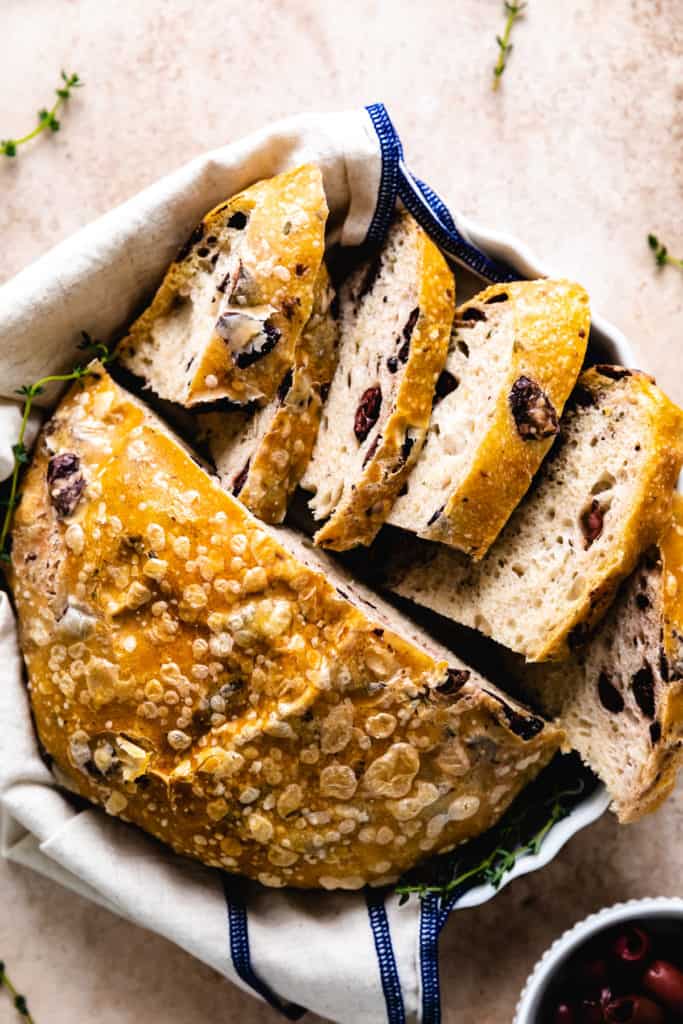
Best Olive Loaf Recipe
Have an olive lover in your life? This olive bread recipe requires no kneading and results in a delicious bread that has a delightful crust and perfect amount of chewiness.
All you need to do is mix up the dough, let it rise, and shape it into a round or loaf. The result is a kalamata olive loaf packed with flavor that the entire family will love!
Ingredients You’ll Need for Kalamata Bread:
- Bread Flour: We love bread flour for this olive loaf, because it gives this homemade bread a nice chewy texture. If you don’t have bread flour handy, use all-purpose flour instead.
- Water: You’ll need warm water to activate the yeast and to give this bread moisture.
- Thyme: Fresh thyme is my absolute favorite herb for this kalamata bread. If you don’t have fresh thyme available, use 2 teaspoons of dried thyme.
- Olive Oil: You’ll need 1 tablespoon of olive oil plus more for drizzling over the bread dough.
- Yeast: We use active dry yeast to make this bread dough rise.
- Salt: Enhances the flavors of the bread. Omit if you’re sodium sensitive or think the brininess of the olives will be salty enough.
- Kalamata Olives: We can’t forget the key ingredient! Kalamata olives provide a salty, brininess to this no-knead bread! This ingredient can be adjusted to taste. Of course, you don’t want to add too many; otherwise, the bread dough won’t hold together.
How to Make Kalamata Olive Bread:
See the recipe card below for the ingredient amounts and full instructions.
This is an easy olive bread recipe that’s perfect for first-time bread bakers. After the ingredients are mixed, it’s almost all hands-off time from there!
- Mix the bread flour, thyme, yeast, and salt, in a large mixing bowl. I like to use a large, food-safe plastic bucket, so there’s plenty of room for mixing.
- Pour in the warm water and olive oil and stir to combine. A Dutch dough whisk works great for mixing this type of bread dough since it is fairly sticky. This type of whisk is great for getting down into the sides of the bowl so all the ingredients get well combined.
- Stir in the kalamata olives until they’re well incorporated into the dough. Drizzle the top of the dough with a little olive oil to keep it from drying out, and cover the bowl with a clean kitchen towel or plastic wrap.
- Place the container in a warm area and allow the dough to double in size. You can let the dough rise up to 12 to 16 hours if you like. It will develop a wonderful flavor.
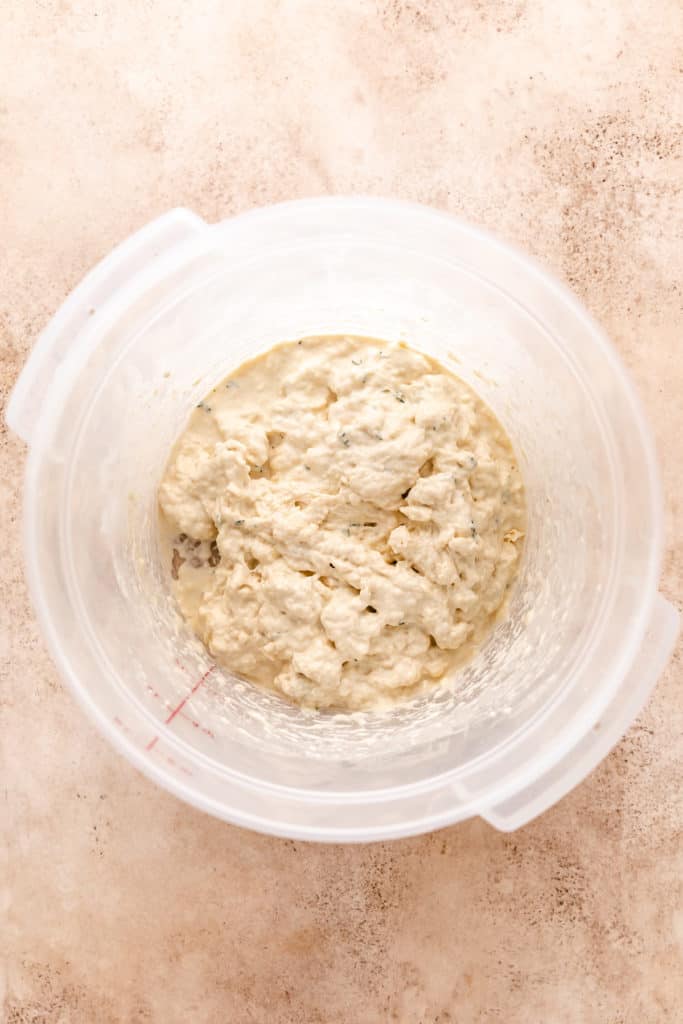
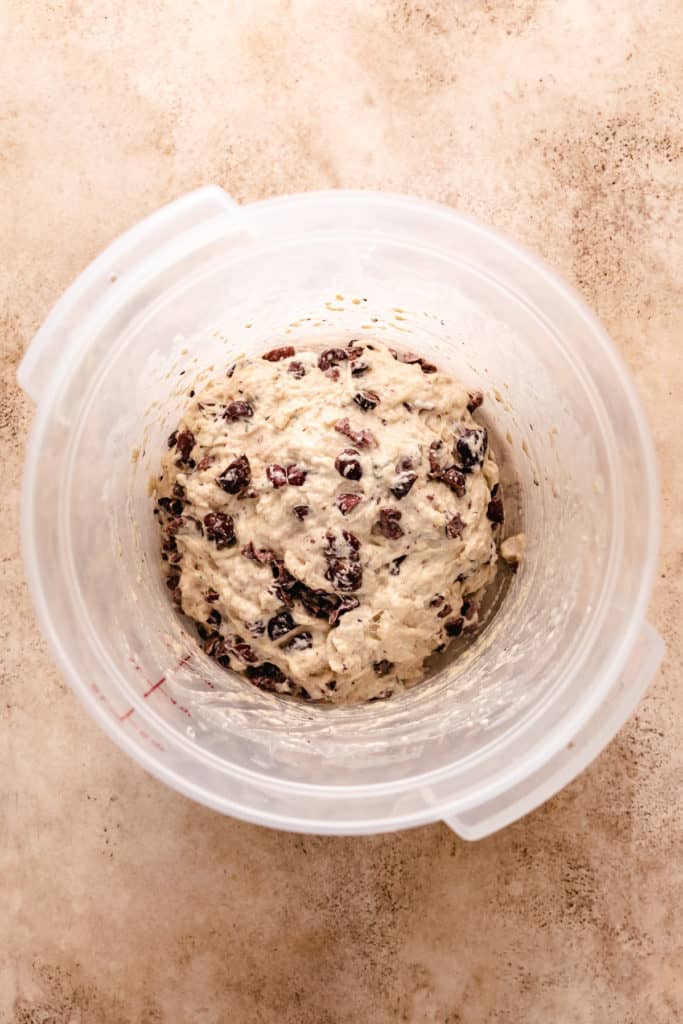
- When you’re ready to shape the dough, turn it out onto a lightly floured work surface and sprinkle flour over the top. Use both hands to turn the dough at the base and form a round loaf, or alternatively form the dough into an oblong loaf shape. Wet your hands if the dough feels too sticky to manage.
- Use a bench scraper to move the dough to a large, square piece of parchment paper. Place the parchment paper into a Dutch oven or roasting pan with a lid. Allow the dough to rise again for 30 minutes to an hour or until the dough is noticeably puffy and larger in size. It helps to place the dough in a warmer area of your house.
- Once the dough rises a second time, preheat the oven to 450°F. Bake the olive bread in the covered Dutch oven or roasting pan (with a lid) for 40 minutes. Remove the lid and continue to bake for another 15 to 20 minutes or until the crust turns deep, golden brown.
- Carefully remove the bread from the pan, and allow it to cool completely before slicing (about 1 hour).
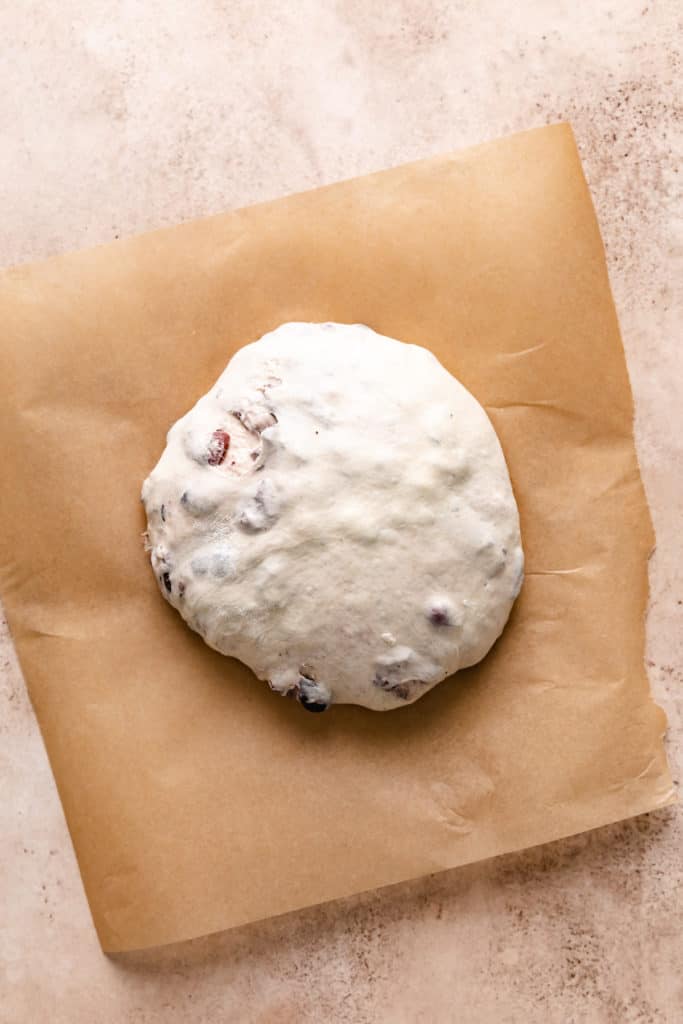
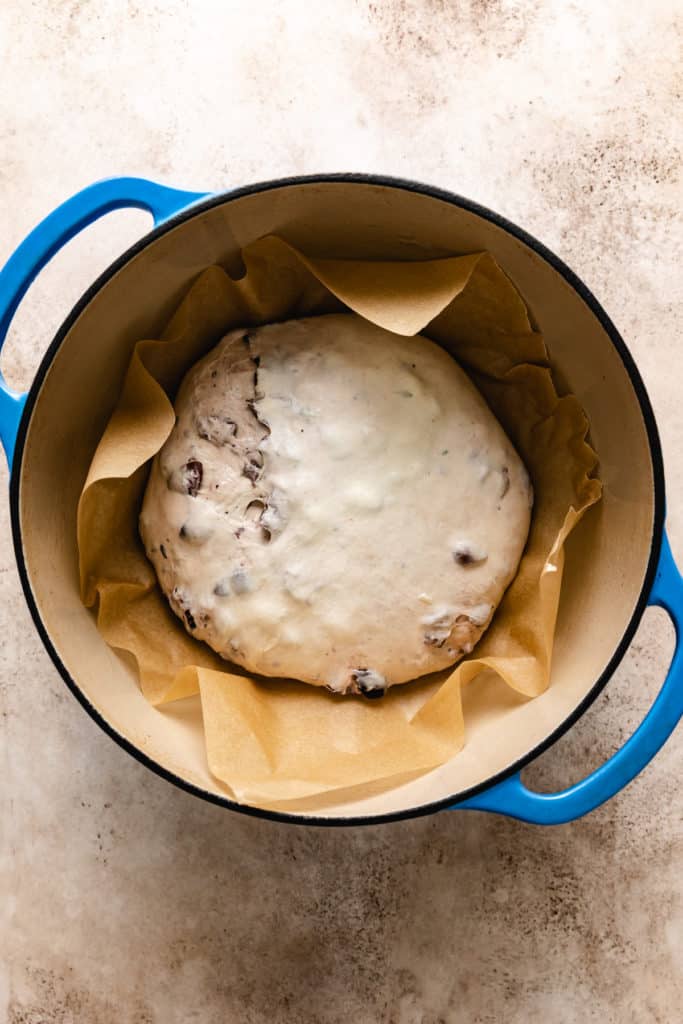
Tips and Variations:
- Don’t add extra flour! This dough is sticky and meant to be well-hydrated. Adding extra flour causes this kalamata olive bread recipe to become dry and dense.
- Use wet hands. When handling the dough ball, use wet hands to keep the dough from sticking to your fingers.
- Try a variety of olives. Kalamata olives taste amazing, but why not try green and black olives, too? A variety of olives taste great in this bread.
- Use different herbs. We love fresh thyme, but you may love fresh rosemary or oregano. Use your favorite herbs or omit them altogether.
How to Store Olive Bread:
Room Temperature: Leftover homemade olive bread stores best in a paper or plastic bag for up to 2 days.
Refrigerator: You can store your leftover olive loaf in the fridge for 3-4 days. It will dry out fast in the refrigerator, so enjoy quickly!
Freezer: This bread freezes well. Wrap it in a couple of layers of plastic wrap followed by some aluminum foil. Drop it into a plastic bag or freezer-safe container, and the olive loaf stays fresh for about 2 months.
Thawing and Reheating: Thaw the bread in the fridge or at room temperature. Reheat individual slices of bread in the microwave or toaster oven until heated through or in the oven wrapped in foil at 350°F until it reaches the desired temperature.
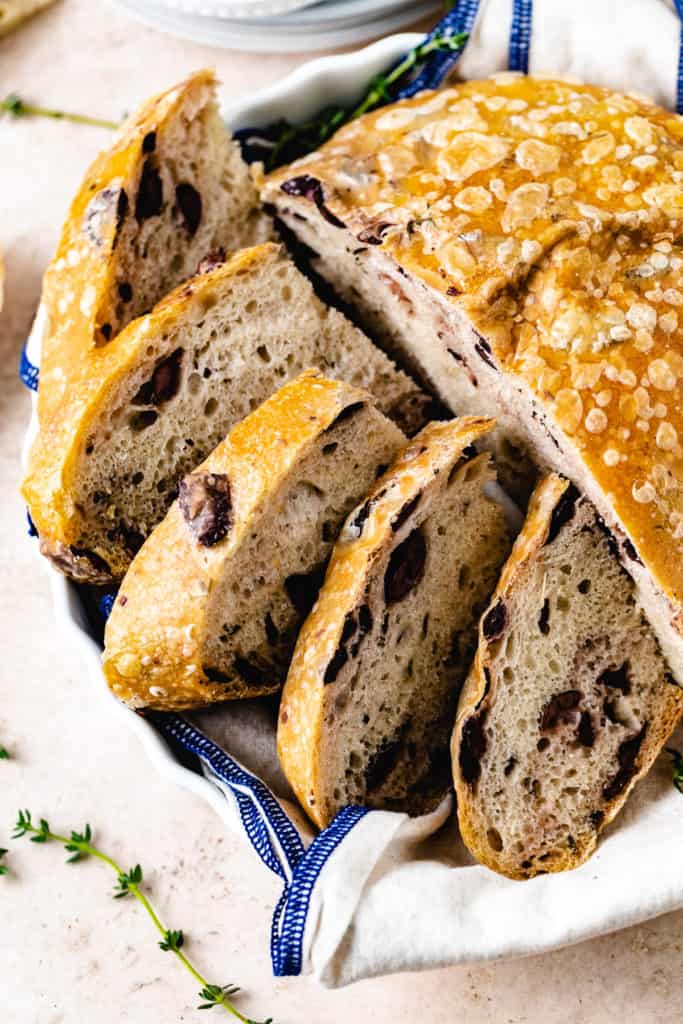
Can you use a stand mixer or bread machine for this olive bread?
This bread is a no-knead olive bread, so there’s no reason to use a mixer or bread machine.
The sticky bread dough would attach itself to the paddle or dough hook attachment and be a mess to clean up.
Skip the appliances and stir these ingredients in a large bowl!
What are some add-in options for this bread?
There are so many options when it comes to add-ins for kalamata olive bread. It’s all about preference and what your family enjoys. Try some of these out to find your favorites:
- White cheddar cheese.
- Parmesan cheese.
- Green olives.
- Black olives.
- Walnuts.
- Sun-dried tomatoes.
- Feta cheese.
- Fresh rosemary.
Is olive bread good for you?
This depends on the individual and his/her diets preferences and restrictions. A slice of bread in moderation may be okay for most people. However, this bread is mainly carbs and fat.
If you follow a low-carb or low-fat diet, kalamata olive bread may not be a good option. This is particularly true if you are unable to tolerate gluten.
If you’re unsure about whether this bread is a healthy option, it’s best to ask your doctor or dietician for advice.
What goes well with olive bread?
Kalamata olive bread pairs well with so many condiments and main dishes. Or, enjoy a slice or two by itself. You really can’t go wrong!
Here are a few of our favorite ways to serve it:
- Serve it as a side with French Onion Pasta.
- Have some as an appetizer with Olive Oil Bread Dip.
- Smear Roasted Garlic Butter across a piece or two as a quick snack.
- Add some slices to a charcuterie board.
- Have a loaf of bread with some Tuscan Chicken Pasta.
- Make a fresh loaf of olive bread to serve with coffee, tea, or a glass of wine.
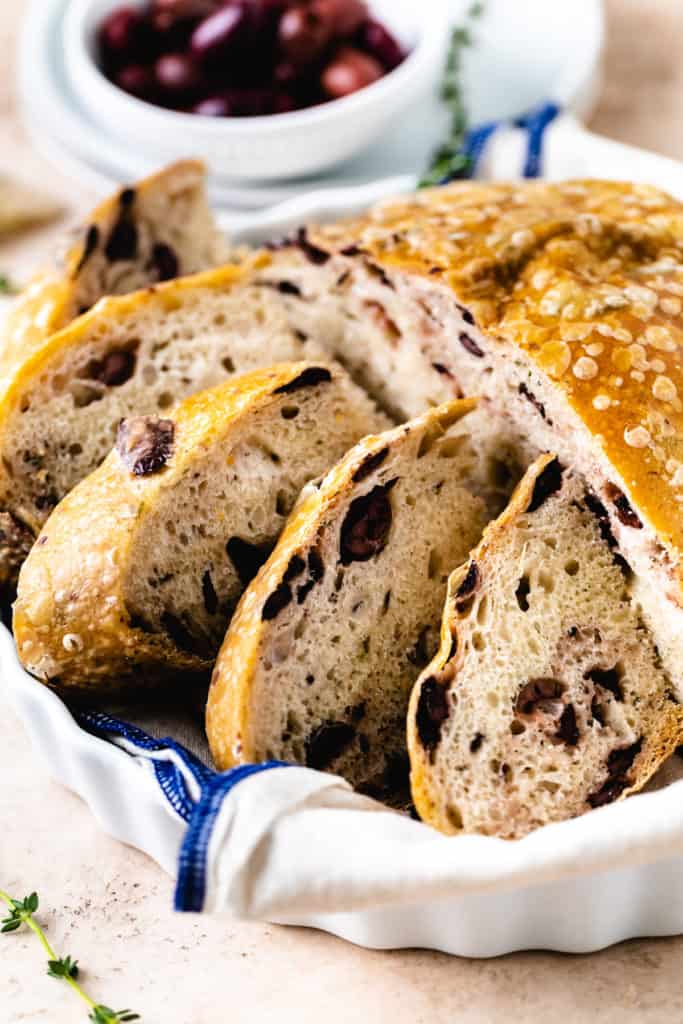
Why didn’t my bread rise?
There are several factors that could cause your bread not to rise, including using expired yeast, too low of a temperature when proofing the dough, using too much flour in proportion to the other ingredients, inadequate mixing of the dough or an insufficient rising time.
Using too many olives or add-ins can lead to dense and heavy loaves as well since these olives contain a lot of moisture which can inhibit gluten development.
To ensure that your bread rises properly next time, use yeast and flour that haven’t expired and follow the instructions carefully when making your dough.
Other Baked Goods You May Love:
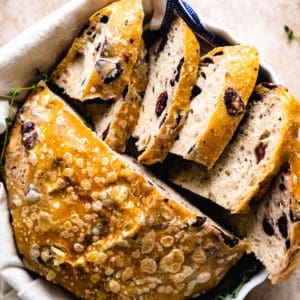
Ingredients
- 3 cups bread flour
- 1 to 2 tablespoon(s) thyme leaves, may substitute with 2 teaspoons dried thyme
- 1 tsp. active dry yeast
- ½ tsp. kosher salt
- 1 cup water, warmed to 110°F to 115°F
- 1 tablespoon(s) olive oil, plus more for drizzling the top of the dough
- 1 cup kalamata olives, well drained and chopped
Instructions
- Mix the bread flour, thyme, yeast, and salt, in a large mixing bowl or food safe container.3 cups bread flour1 to 2 tablespoon(s) thyme leaves1 tsp. active dry yeast½ tsp. kosher salt
- Pour in the warm water and olive oil and stir to combine. Stir in the kalamata olives until they're well incorporated into the dough then drizzle with a little olive oil.1 cup water1 tablespoon(s) olive oil1 cup kalamata olives
- Cover the bowl with a clean kitchen towel or plastic wrap, and allow the dough to double in size (usually 1 to 3 hours). You can let the dough rise up to 12 to 16 hours if you like. It will develop a wonderful flavor.
- When you're ready to shape the dough, turn it out onto a lightly floured work surface and sprinkle flour over the top. Use both hands to turn the dough at the base and form a round loaf, or alternatively form the dough into a long loaf shape. Wet your hands if the dough feels too sticky to manage.
- Use a bench scraper to move the dough to a large, square piece of parchment paper. Place the parchment paper into a Dutch oven or roasting pan with a lid.
- Allow the dough to rise again for 30 minutes to an hour or until the dough is noticeably puffy and larger in size. It helps to place the dough in a warmer area of your house.
- Once the dough rises a second time, preheat the oven to 450°F. Bake the olive bread in the covered Dutch oven or roasting pan (with a lid) for 40 minutes. Remove the lid and continue to bake for another 15 to 20 minutes or until the crust turns deep, golden brown.
- Carefully, remove the bread from the pan, and allow it to cool completely before slicing (about 1 hour).
- Scroll up and see the post for tips, FAQs, serving suggestions, and storage recommendations.
